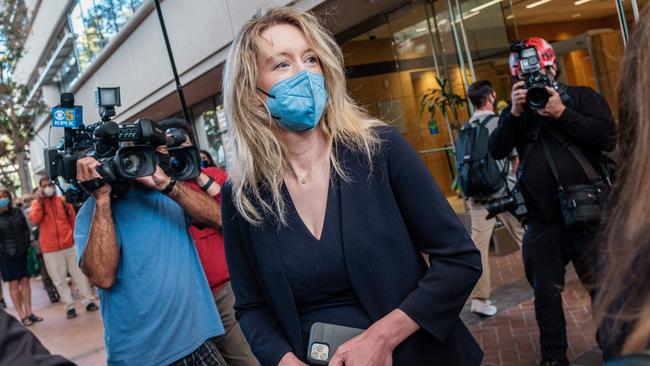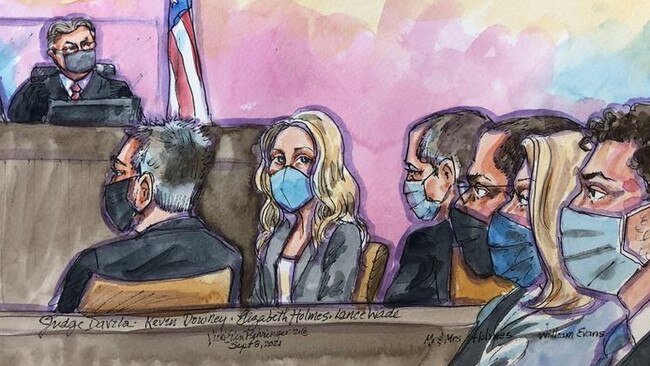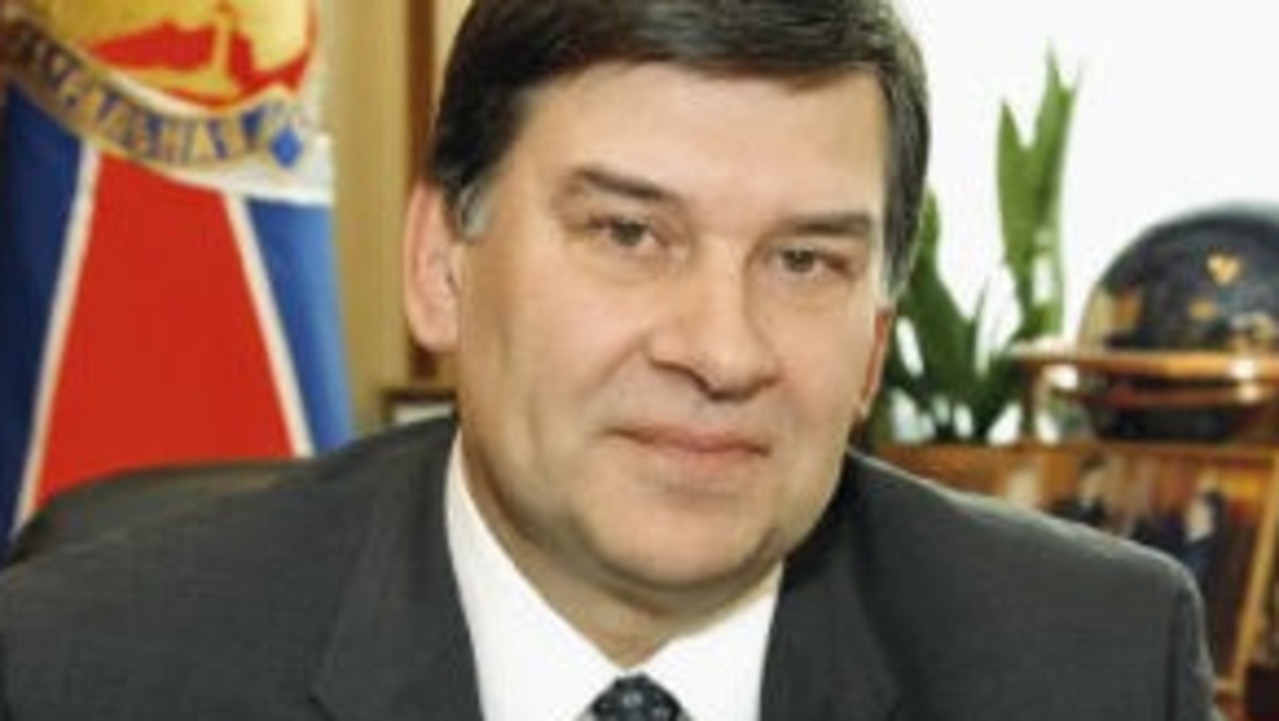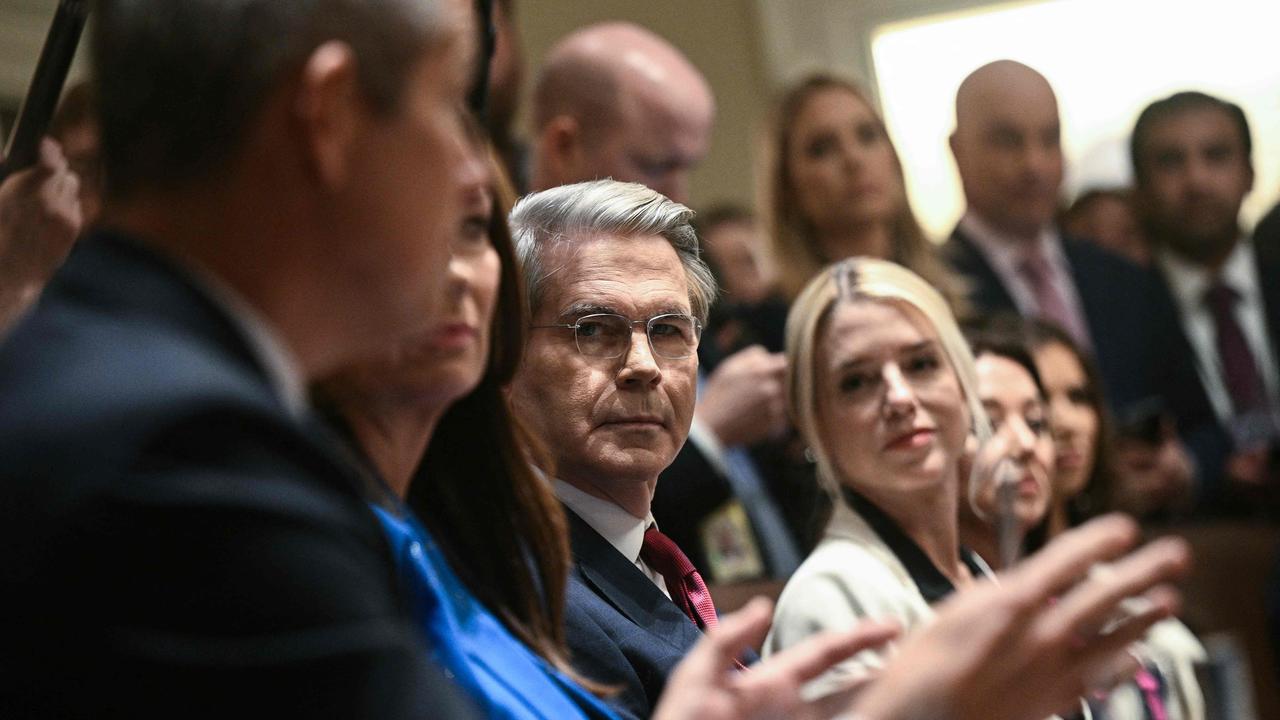In Elizabeth Holmes trial, ex-Theranos employees cite culture of fear and isolation
Pervasive secrecy kept even high-ranking people at start-up in the dark, former employees say in testimony.

In 2013, as Theranos Inc. was in the throes of trying to get its blood-testing machines into a national drugstore retailer, Adam Rosendorff walked into the CEO’s office and made a request: Wait.
Dr Rosendorff, then Theranos’s lab director, felt some lab tests were too unreliable to use on real patients. He asked Elizabeth Holmes, founder and chief executive officer, to delay the public launch, according to court testimony.
Ms Holmes seemed nervous and trembled as she spoke, Dr Rosendorff testified, but she resisted his appeal, and the company went ahead with the public launch.
Theranos executives would go on, Dr Rosendorff said, to circumvent his directive to staff to stop using on patients a certain test that had proved inaccurate, push him to lie to doctors and pressure him to resign to avoid being fired.
Such was life at Theranos, according to testimony from people who worked there that has emerged in the monthslong criminal fraud trial of Ms Holmes. She and her top deputy, Ramesh “Sunny” Balwani, created a culture of isolation, secrecy, retaliation and fear while running the company with absolute control, according to accounts from former employees who have taken the witness stand.
Together with other evidence from the prosecution, these former employees describe a company culture shaped by financial, technical and operational challenges that dogged Theranos as it tried to revolutionise blood testing but kept coming up short.
Ms Holmes faces a dozen counts of wire fraud and conspiracy to commit wire fraud. In her conversations with investors that have been part of the trial, and in her statements to the Securities and Exchange Commission in a 2017 interview, Ms Holmes explained that protecting Theranos’s trade secrets required the utmost vigilance. Ms Holmes’s lawyers have shown emails in court showing Theranos executives quickly responding to problems that employees brought to their attention.
At Theranos’s height, Ms Holmes employed about 800 people. Some of them joined the company because they found its mission admirable and its leadership charismatic and earnest, according to testimony from former employees.

In time, employees said, their opinion changed, as Theranos stumbled and pressure mounted to make what seemed like unworkable technology work for real patients.
“I was very stressed and unhappy and concerned,” former Theranos chemist Surekha Gangakhedkar testified in court. She resigned in 2013 ahead of a public launch that put Theranos machines inside Walgreens drugstores, a step Dr Rosendorff tried to delay.
Employees were siloed according to their duties, former workers testified, making it difficult to share information that could have allowed them to troubleshoot the technical and scientific problems hamstringing the company.
Testimony from former employees suggests that the culture came from the top: Ms Holmes and Mr Balwani, Ms Holmes’s boyfriend at the time as well as the second in command. Ms Holmes controlled all of Theranos’s supervoting shares and owned about half the company, which gave her absolute power in the boardroom, and she set the tone for the day-to-day expectations of employees, according to court testimony.
Ms Holmes travelled with an extensive security detail and restricted the movements of employees and visitors to Theranos’s offices, according to a record of the government’s interview with a former Theranos administrative assistant, and court testimony from other employees. Mr Balwani surveilled employees’ emails and shamed them for not working long enough hours, former employees said.
The revelations from Ms Holmes’s trial build on The Wall Street Journal’s articles in 2015 and 2016 about the company’s struggles as well as comments from former employees that were included in a book, podcasts and a movie about Theranos. They provide details about the day-to-day atmosphere at Theranos, including perceived intimidation and fear of retaliation, and the toll it took on the people who worked there.
The trial revealed an extreme instance of how employees were allegedly kept in the dark. Two co-lab directors who shared responsibility for the Theranos lab at the same time, Sunil Dhawan and Lynette Sawyer, never met or knew about the other, according to their testimonies.
Ex-Theranos project manager Daniel Edlin said in testimony that he was allowed to seek information that was necessary to complete his own work, but anything beyond that, “I had no need to ask about it and shouldn’t ask about it.” Mr Edlin operated under those restrictions despite being a college friend of Ms Holmes’s brother, Christian Holmes, and a high-ranking employee who reported directly to the founder.
The level of secrecy practised at Theranos sounds less like a start-up and more like “the idea of the Manhattan Project,” said Jonathan Bush, a longtime healthcare technology CEO, referring in an interview to the government’s classified atomic-weapon project during World War II. When building a start-up, he said, “You don’t pull the cover off and it just works.” Gruelling hours aren’t unusual at a start-up. But at Theranos, where some lab workers pulled 16-hour days and slept in their cars, long days could be used in a punitive way to shame other employees, they said in court testimony. According to an email displayed in court, Mr Balwani boasted about the software team working until 3am and returning at 10am, telling other employees that they weren’t working hard enough if they fell short of that schedule.
Dr Rosendorff said he was guided to tell inquiring doctors that irregular test results were due to some factor other than Theranos’s machines, such as the patient being on medication, reinforcing his belief that the company would obfuscate the truth at the expense of patient care.
Mr Balwani’s allegedly quick temper contributed to the fear that came to dominate some employees’ experience at Theranos. He was known for getting angry easily with his subordinates, stomping around the office and firing employees on a whim, leading to high turnover that one employee described as a carousel, according to court records and testimony.
A lawyer for Mr Balwani didn’t respond to a request for comment. Mr Balwani faces a separate trial next year for the same charges as Ms Holmes and has pleaded not guilty.
Former employees said they were expected to preserve all their work emails, which were at times read by Mr Balwani. Dr Rosendorff testified that before he resigned, he forwarded more than 150 emails to his personal account from his Theranos account, an effort he said was to preserve documentation of how he had tried to rectify problems in case of a government investigation. When Theranos found out, Mr Balwani and the company’s human-resources chief demanded that he delete them all. He did.
Theranos chemist Ms Gangakhedkar printed a number of emails to take with her on her way out, she testified, largely an act of self-preservation in anticipation of Theranos having problems with patient blood tests.
“I was worried,” said Ms Gangakhedkar, her voice breaking in her testimony. “I was actually scared that things would not go well.”
Sara Randazzo contributed to this article.
The Wall Street Journal







To join the conversation, please log in. Don't have an account? Register
Join the conversation, you are commenting as Logout